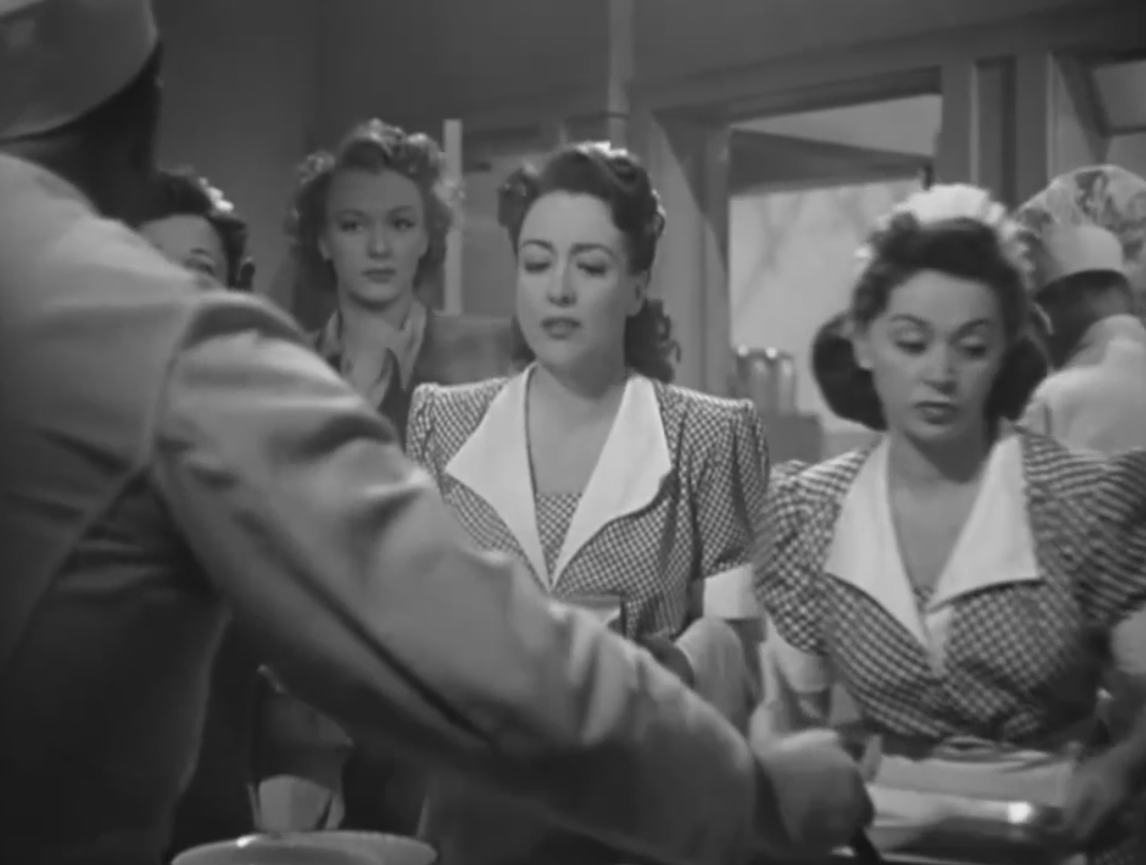| Description |
| On-screen: |
Mildred works as a waitress |
| Description: |
Upbeat, busy music featuring light woodwinds and playful strings as we see a montage of waitresses working; this theme was borrowed from an earlier Steiner score (The Life of Vergie Winters, RKO, 1934), which the cue sheet identified as "Old Lavender" |
| Music annotations: |
[m. 1] mf; [m. 4] rall; [m. 5] a tempo; [m. 7] Hugo: molto grazioso - (dialogue + narration over it) str, W.W., celeste, harp bells; [m. 8] rall; [m. 9] a tempo; [m. 21] one tone higher; [m. 24] poco rall |
| Film annotations: |
[m. 2] (Montage); [m. 13] Dissolve; [m. 21] In 6 weeks |
| Orchestration annotations: |
[m. 1] str / W.W. / celeste / harp / bells; [m. 12] horn; [m. 13] add cel, piano (bells?) / vibra; [m. 17] cel piano etc.; [m. 19] vibra |
| Analysis: |
The theme features a succession of melodic ideas and moves fluidly between keys; the first, dotted-rhythm idea moves from G to D major, then steps up briefly to Eb major; an ascending scalar motive in D major is then repeated a chromatic mediant higher in F major; the final section features a calmer eighth-note gesture within a rising chromatic sequence (Db64 - G9 - Eb64 - A9) |
|
| Tags |
64 chord | added-note chord | altered dominant | chromatic mediant | chromatic sequence | common-chord modulation | foreign key modulation | hectic | heroine | leading lady | montage | restaurant | rushing | self-borrowing | sequential modulation | serving | upbeat | voice-over | waitress | working
|
Media |
